Fuchsia is one of those plants that has little value when it’s not in bloom. Sorry, little plants! But you just aren’t that pretty when you aren’t flowering.
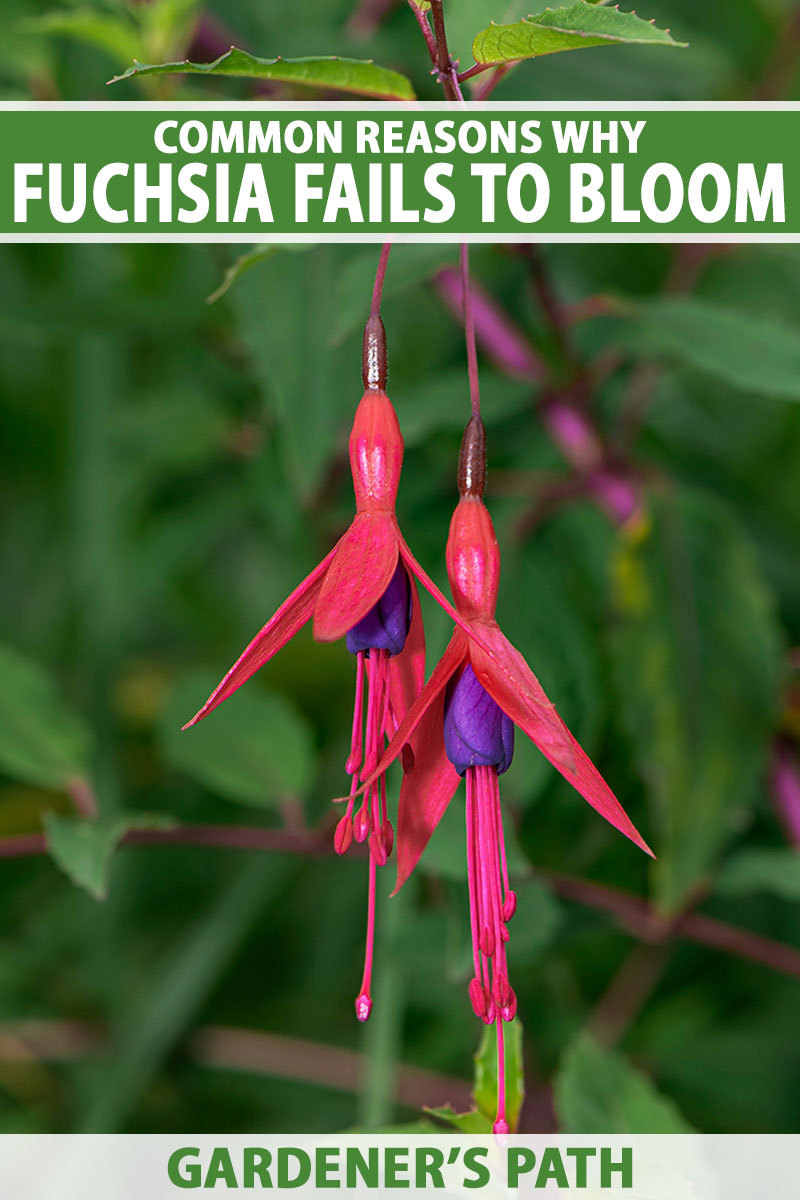
We link to vendors to help you find relevant products. If you buy from one of our links, we may earn a commission.
Like roses, the leaves and stems aren’t all that attractive on their own. Hostas can hold their own without blossoms, but most people aren’t growing fuchsia for the foliage.
But also like roses, when fuchsias are in bloom, they’re incomparable.
Fuchsia flowers are so beautiful that people will fight their local surroundings to grow them, even if they live in entirely the wrong climate. And I totally get it.
I babied and nurtured these specimens for years in the driest, hottest climate imaginable. Pretty much the opposite of what fuchsias prefer. But each time I walked by the bright, frilly blossoms, it was worth all the care and attention.
But every now and then, a plant won’t bloom. It’s frustrating and such a waste of potential. On the bright side, it’s fairly easy to figure out what the problem is and how to fix it.
Here are seven common causes of a lack of flowering, and what you can do to resolve them:
7 Common Reasons Why Fuchsia May Not Bloom
Any time a plant is stressed, it will go into emergency mode.
Some will “bolt” and send out seeds to try and hurry to complete their life cycle. Others, like fuchsia, will abandon ship and wait for better conditions to return.
But “stress” can be a nebulous term. It can mean that your fuchsia was recently transplanted and its roots were damaged. But it can also mean pests or diseases are impacting the plant, weakening it.
Let’s take a look.
1. Diseases
Fuchsias are susceptible to several different diseases, usually fungal in nature. Of the most common diseases, one of these can cause flowers to not form.
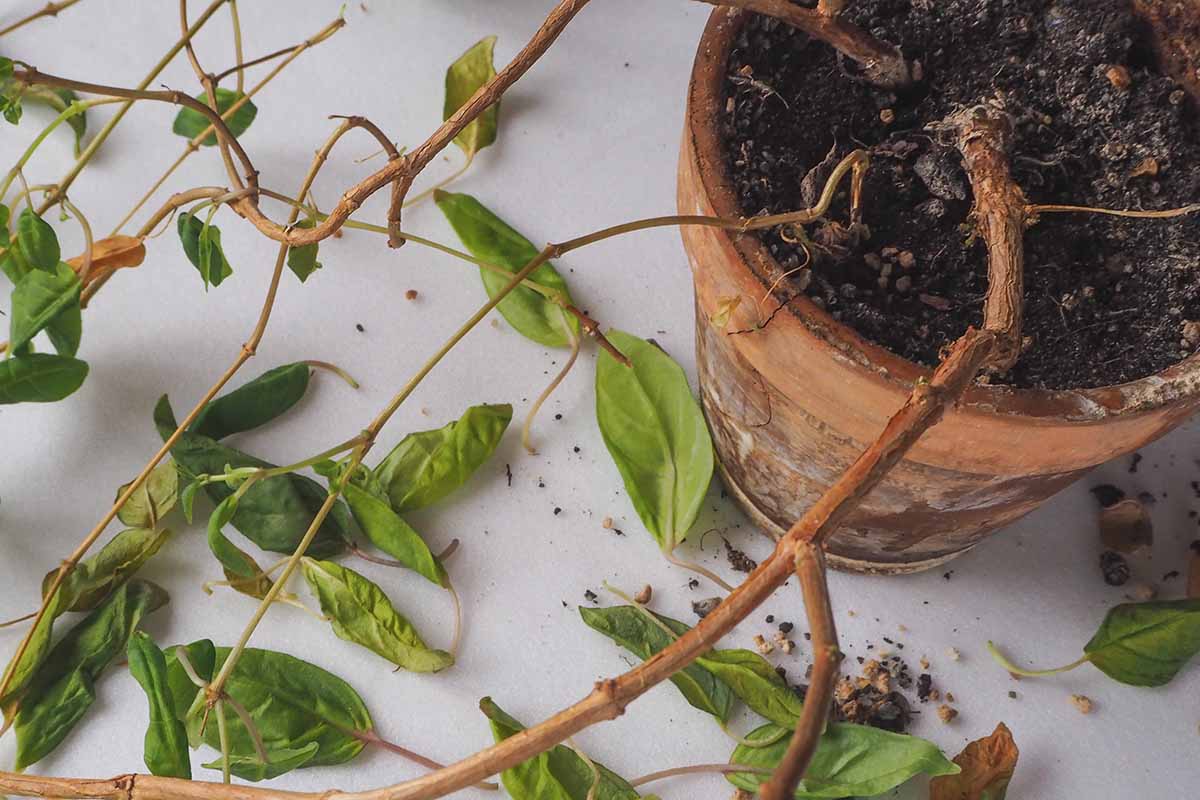
Botrytis blight, also known as gray mold, is caused by Botrytis cinerea.
Most often, it causes existing flowers to turn brown and rot, but it can also cause the young, developing buds to turn brown and die.
Good sanitation and being careful not to crowd plants can help prevent this disease, as can being certain to water at the soil level rather than on the foliage.
A product containing the beneficial bacteria Bacillus amyloliquefaciens strain D747 can be used as an effective treatment.
Spray the foliage and stems the second you see any sign of this disease, which might present as rotting, brown stems and leaves at first.
This disease is more common in specimens that experience drought stress.
2. Failure to Deadhead
After flowers have developed, if you find that new blossoms aren’t forming, take a look at your deadheading process. You should be pinching off flowers once they start to fade.
Fuchsia lives to produce berries full of seeds that can go on and produce new plants. Once they make those berries, they may stop producing flowers because their job is done.
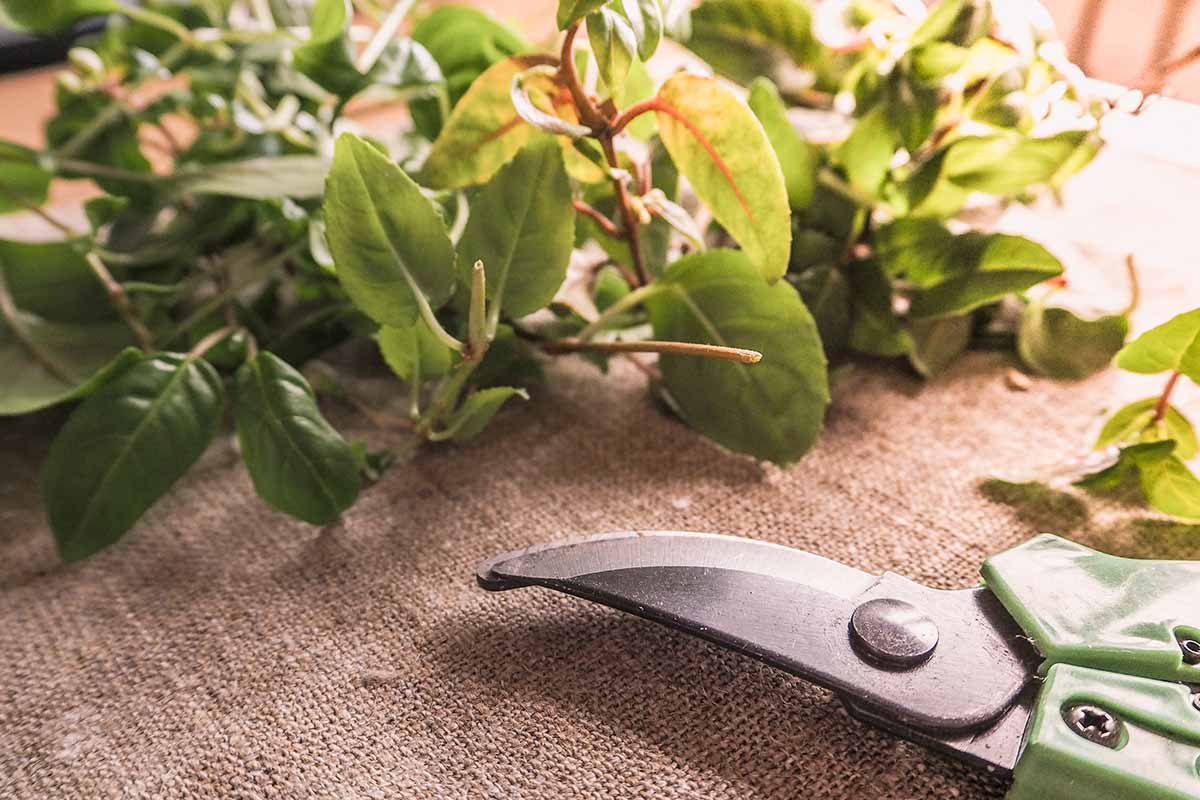
Some cultivars will continue to bloom even if you aren’t dedicated to deadheading.
It will usually say so on the nursery tag, but I’ve had great luck with ‘Beacon,’ ‘Estelle Marie,’ and cultivars from the Diva series.
Otherwise, aim to remove the flowers right before they would drop off on their own. If the base is starting to swell, it’s time to act.
Deadheading is different than pruning, which we’ll talk about in a minute. Both are essential to get right if you want lots of flowers.
3. Lack of Nutrients
If you don’t fertilize your fuchsias regularly, they won’t have the energy to develop buds and flowers. Fuchsias, especially those grown in pots, need quite a bit of food.
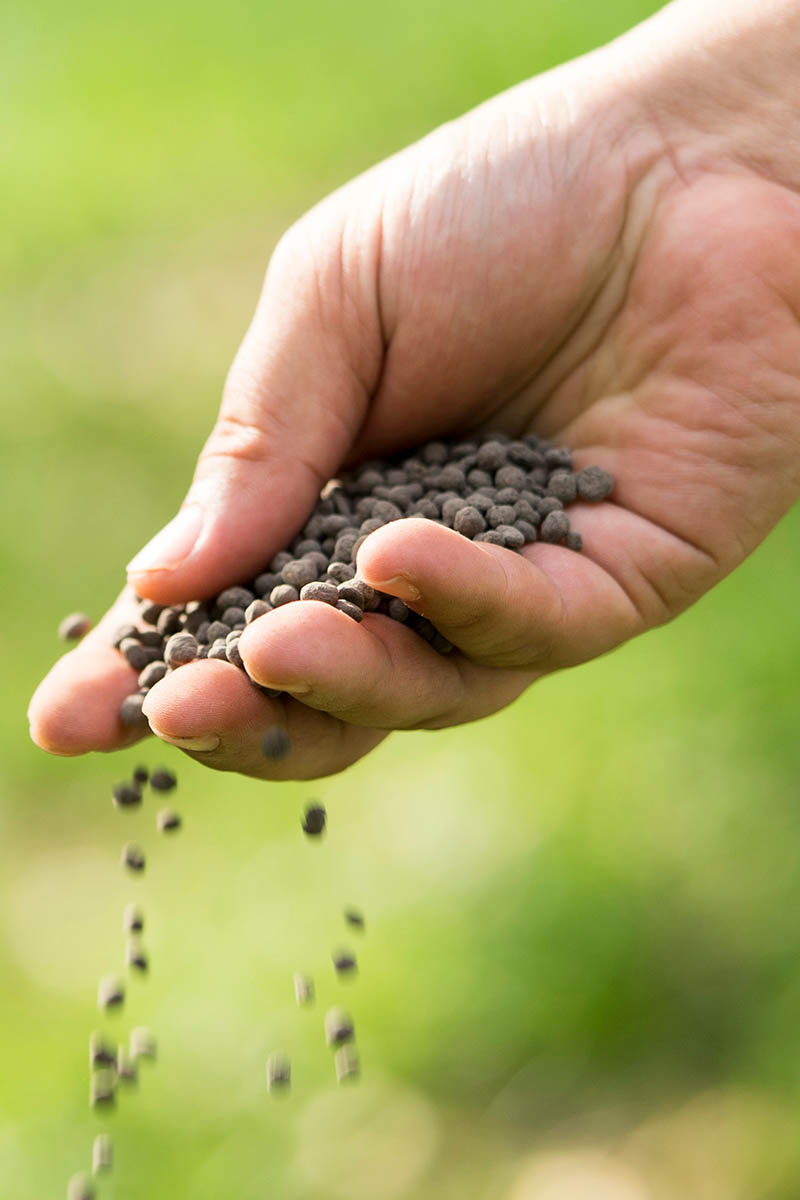
If the plant isn’t even trying to develop buds, this would be the first thing I’d check.
Look for a fertilizer that is high in phosphorus (P in the NPK ratio of plant macronutrients). Usually, anything labeled as a flower-specific food will work.
I love Down to Earth’s Rose and Flower Mix, which is formulated just for flowering plants. It comes in a compostable container in one-, five-, or 15-pound quantities.
Down to Earth Rose and Flower Mix
You can find this option at Arbico Organics.
Bone meal is also a good choice. There are lots of bone meal products out there, but my old reliable Down to Earth makes one.
Grab five pounds from Arbico Organics.
If you want something more widely available, Miracle-Gro Bloom Booster is also well-balanced for flowering plants.

It’s available in one-and-a-half-pound and five-and-a-half-pound containers at Amazon.
4. Pests
Fuchsia gall mites (Aculops fuchsiae) are a type of pest rather than a disease, but you can’t see them with the naked eye.
That’s why some gardeners assume they have some sort of viral or fungal issue on those hands when it’s actually an infestation.
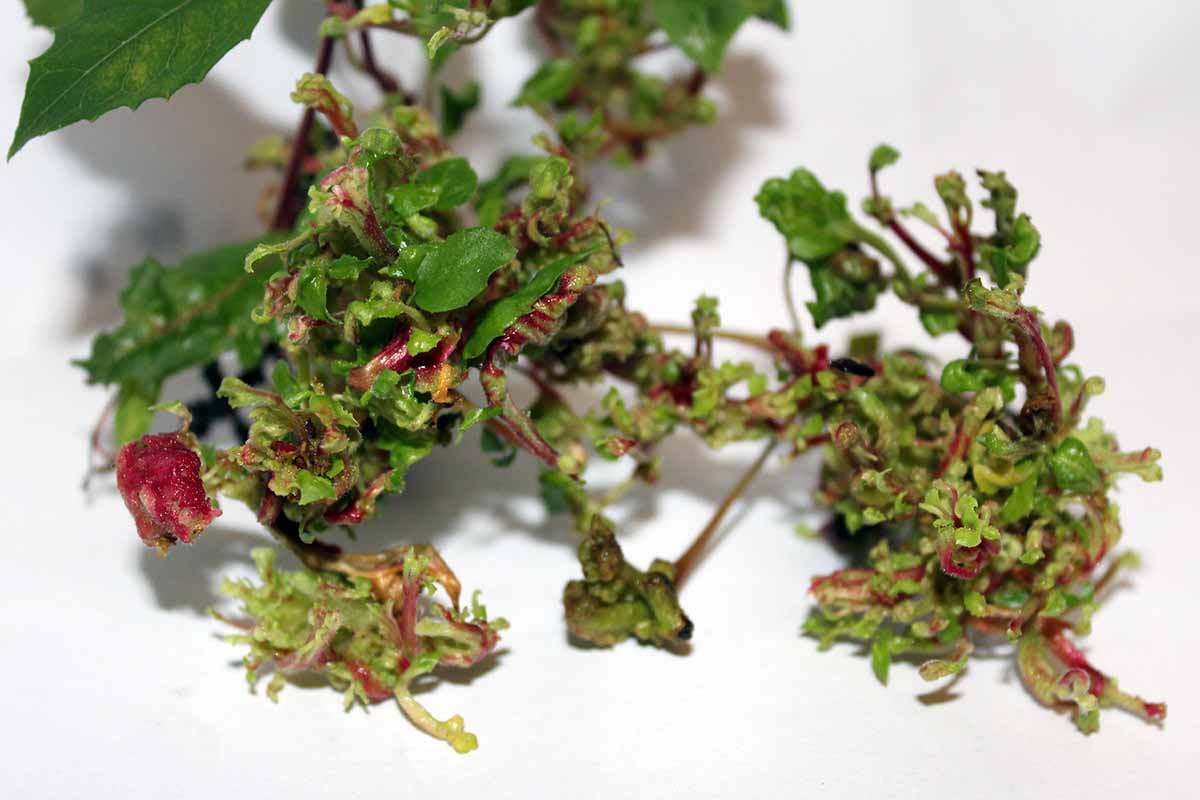
What you can see when these mites are present is the foliar distortion. The ends of the growing branches will display funky clusters of distorted leaves, and flower buds won’t form. It’s a pretty distinctive problem.
Flowers will still form on the stems that have normal leaf growth, but anywhere that the leaf growth is distorted won’t develop buds.
There isn’t any really stellar method of treatment available, but the predatory mite Amblyseius andersoni can help a lot. These mites can’t resist a meal of microscopic foes.
Other than gall mites, aphids, which are sap-sucking insects, can prevent buds from opening when they’re present in large enough numbers.
Read our guide to learn how to identify and get rid of aphids.
5. Pruning at the Wrong Time
To maximize blooming, you need to both prune, and not prune. Make sense?
Fuchsias flower on new growth, so pinching them when they’re young will encourage this new growth and lots of blossoms. But pruning older growth as it develops will stop flowers from forming.
Later, when the plants start to develop berries and seeds, they stop producing flowers.

So if you leave the pruning until too late, the plant will naturally stop producing flowers. In other words, you need to find the sweet spot between pruning too much and too little: just the right amount.
The right pruning method depends on whether you have a trailing or upright type.
Trailing types should be pruned back in the early spring to about six inches above the soil. This should be done just as the new growth is developing in the spring.
Then, as the plant grows longer, feel free to pinch back the branches to a leaf bud to encourage branching.
Upright types should be pruned to remove dead, dying, or deformed branches and to create a nice shape. This should also be done early in the spring as new growth is developing.
Visit our guide to pruning fuchsia for more tips.
6. Transplanting
When you dig up and transplant fuchsia, disturbing or damaging the roots is pretty much inevitable and impossible to avoid.
That doesn’t mean you shouldn’t transplant at all. It just means you should expect some reduction in flowering and growth when you move a plant to a new spot in the garden.
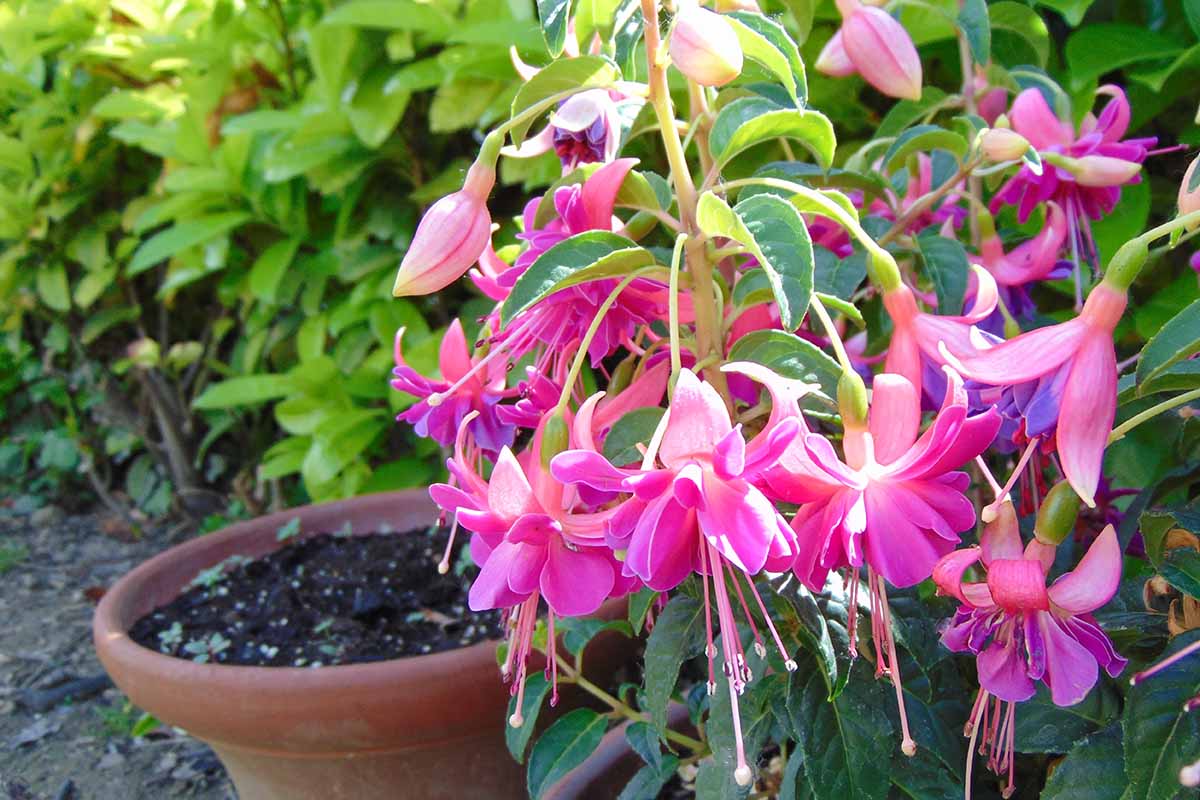
When you move a plant, you can limit the stress from transplanting by digging up as much of the existing soil as you can. The more area you lift up, the less you’ll disturb the roots.
But if you’re moving one from one container to a different container, there isn’t much you can do.
Just try to move things around on a cool, cloudy day and make sure the plant has plenty of water ahead of time, but not too much.
If transplant shock is the issue, the plant might drop a few buds and not grow for a few weeks, but it will pick right back up, assuming you placed it in a location with the right conditions.
7. Wrong Light Exposure
I know that fuchsia reputedly loves shade, but these plants actually prefer brighter light in cool, wet climates.
The reason that so many of us grow them in shade is that it’s more moist and cool than the surrounding areas.
When these plants are placed in too much shade, they won’t bloom. They simply won’t develop flower buds at all.

Too much sun, on the other hand, can cause the developing buds to fall off the plant. Most often, this is because the plant has been too hot and dry.
Direct sun exposure can be fine in an area that doesn’t become hotter than 60°F, but everywhere else, too much sun will stress the plant.
If you don’t see any buds developing and you don’t see strange leaf growth (see the section on pests above), watch how much light your plant is receiving. If it’s in full shade for the majority of the day, it’s probably too shady.
On the other hand, if the plant is in direct sun, but is developing buds or flowers that drop off the plant, it’s probably too much sun that’s the problem.
Move the plant into dappled light in partial shade, and it should be fine. Be sure to watch the temperature and the moisture level in the soil.
Learn more about fuchsia light requirements here.
Keep ‘Em Coming
It’s easy to fall in love with fuchsia plants when you see them in full bloom at the store. But once you bring them home, it’s infuriating if they don’t flower as you expected.
If you need a refresher on how to grow these fabulous flowers, have a read of our guide.
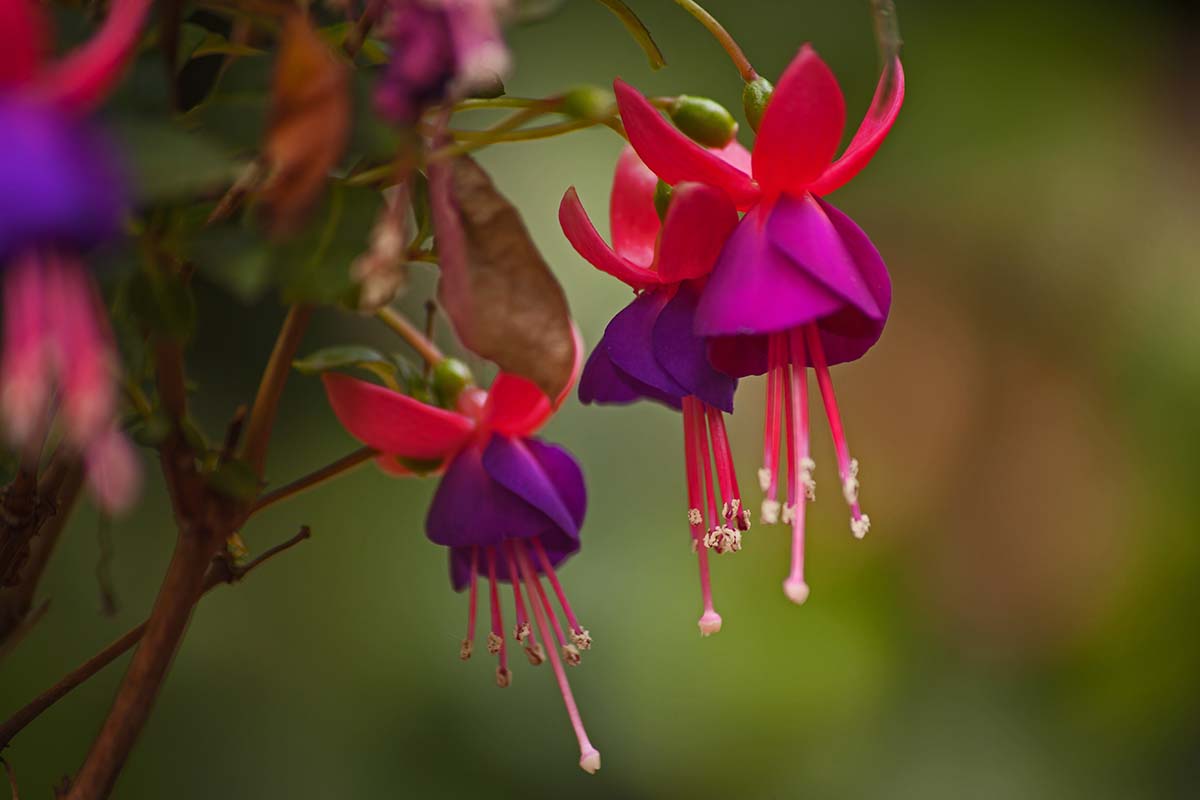
What kind of fuchsia is your favorite? Do you have a double-flowered trailing type? An upright with classic single blossoms? How did you help it return to its floriferous form? Let us know in the comments.
I hope this guide set you on the right path. If so, we have more fabulous fuchsia guidance to share. Check out these articles next:
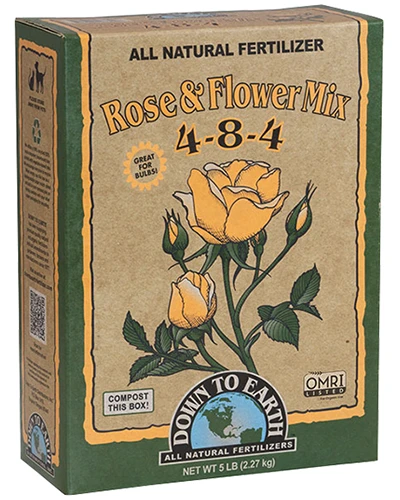
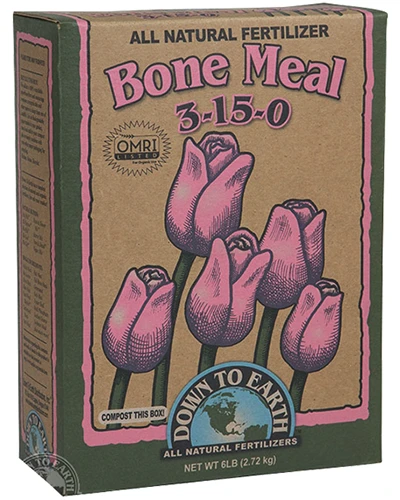

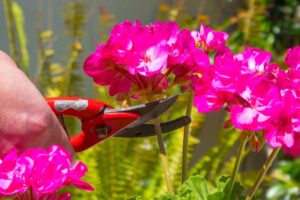

Thanks for the timely article. My Winston Churchill has been putting out beautiful blooms and I’m wondering if Miss California will be able to do so before it gets too hot. We’re already having a spell in the high 90s. I’m in the California Central Valley and they don’t love it here, but these two have come back every spring for the last three years. I have them on the front porch getting a mix of shade and probably now too much afternoon sun. Hope someone can develop a more heat tolerant variety as I do love them.
Hi Laura, I hear you about needing some heat-tolerant fuchsias. I know breeders are working on it, and I can’t wait to see what they come up with. ‘Miss California’ isn’t a big fan of the heat, but it’s more heat tolerant than many other fuchsias so I’m not surprised it has done better than others you’ve tried. Can you move it into more shade or even grow it indoors in an eastern window during the summer? If not, just try to mist it on hot days, and it should be fine unless there’s a severe heatwave. ‘Angel’s Earrings,’ ‘Dollar… Read more »